“I like irony, I like to play a game, I like to stay far away from rhetoric: that’s the reason why I let the objects I design express all these ideas, turning them into a sort of toy you can use even though you’ve grown up.” Alessandro Mendini, Italian designer and architect
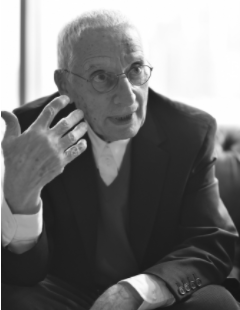
Image source: https://search.creativecommons.org/photos/33ffb628-4ab6-4810-8478-12bc1e210b3a by Atelier Mendini
About his life
Alessandro Mendini was born in Milan in 1931. An architect, designer, journalist, and publisher, Mendini has helped establish, via his numerous works in equally numerous fields, the Italian design sensibility on an international scale—with a particular focus on neo-modern, avant-garde sensibilities, as well as creating a cross-over between art, design and architecture.
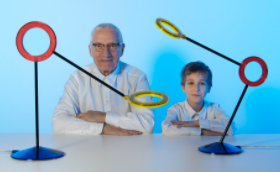
Image source: https://en.wikipedia.org/wiki/Alessandro_Mendini#/media/File:Amuleto_RAMUN.jpg
Mendini’s work encompasses, among others, the fields of graphics, furniture, interiors, architecture, stage design, writing, and painting; he acted as the publisher of the popular magazines Casabella (1970-76), Modo, and Domus (each 1979-85) as well. In 1979, he joined Ettore Sottsass and Michele De Lucchi as a partner at Studio Alchimia before he cofounded Domus Academy in 1982.
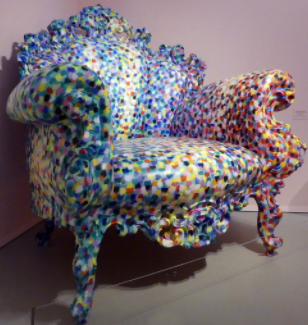
Image source:https://search.creativecommons.org/photos/c9cf2a0f-ac38-4d35-ac75-32a507e66688 by Rob de Vries,
What are the main features of Mendini’s style?
Alessandro Mendini’s work can be safely categorized as contemporary, in small part due to its use of bright colors and non-traditional shapes, meant as an exploration of how one discipline can be affected by another.
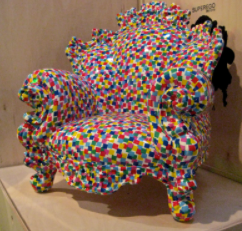
Image source: https://search.creativecommons.org/photos/d4f53a42-4d64-46d6-b0cb-2147c0f71916 by rrenzoo
Much of Mendini’s artistic approach is aimed at injecting new meaning or new perspective into everyday objects, such as furniture or homewares, a method that the Italian artist refers to as “re-design”, which was a notable departure from classic Italian styles at the time; due to this, Mendini is often credited with helping reform the Italian art, design and architecture movements in the 1980s.
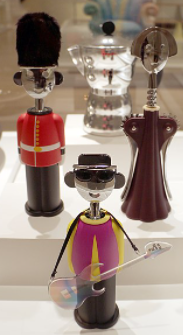
Images source: https://commons.wikimedia.org/wiki/File:Alessandro_mendini_per_alessi_spa.,_cavatappi_alessandro_m._e_anna_g.,_2003.jpg

Images source:https://search.creativecommons.org/photos/5a4b6bfe-3186-4493-8e66-5dad292d998e by Rob de Vries,
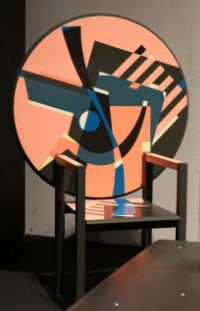
Images source: https://search.creativecommons.org/photos/d465f71f-ba4c-4514-a796-77b5240a5dcc by Sailko
Selected works and projects
- Triennale di Milano – Branch in Incheon (Korea), 2009
- Byblos Art Hotel-Villa Amistà, Verona (Italy), 2005
- Swimming and sports centre, Trieste (Italy), 2004
- Galleria Mendini, Lörrach (Germany), 2004
- Dinosaur – Dinosaur Museum, Katsuyama (Japan), 2000
- Naples metro system – Santa Rosa/Materdei/Università stations, Naples (Italy), 2000-2009
- Town Hall – redevelopment of the grounds, Naples (Italy), 1999
- Luxo – Stardust, 1998
- Fondazione Maghetti – redevelopment of a district in Lugano (Switzerland), 1998
- Complex in Via della Bicchieraia, Arezzo (Italy), 1997
- Alessi – Anna G collection, 1994-2004
- Alessi offices, Omegna (Italy), 1993
- Busstop Hannover – Steintor stop, Hannover (Germany), 1992
- Swatch (Spiritello, Cosmesis, Metroscape, Lots of Dots, Olimpico), 1990-1994
- Paradise Tower, Hiroshima (Japan), 1988
- Groninger Museum, Groninger (The Netherlands), 1988-1994
- Clock Tower, Gibellina (Italy), 1987
- Banal Object, Biennale di Venezia, 1980
- Proust armchair, 1978
- Kandissi sofa, 1978
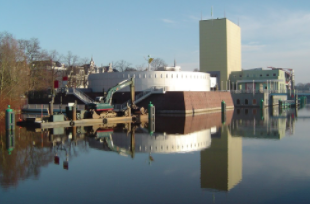
Image source: https://search.creativecommons.org/photos/1f0c66dc-5e32-473d-b861-ef261d89e54b by Sjaak Kempe
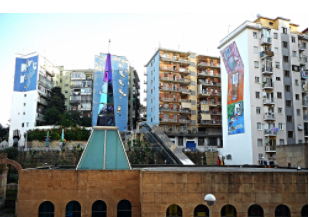
Image source: https://search.creativecommons.org/photos/61f3514f-1164-4207-b5f1-242340ec1b52
Info sources:
https://www.pamono.com/designers/alessandro-mendini
http://www.floornature.com/alessandro-mendini-112/
https://www.highsnobiety.com/2016/02/24/alessandro-mendini-supreme/
